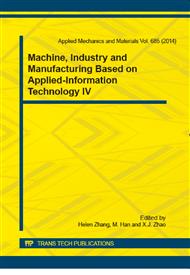p.417
p.420
p.424
p.429
p.433
p.439
p.444
p.448
p.457
Study of the Relationship between Heat Island Effect and Urbanization Expansion Based on Index Method of Xi'an City
Abstract:
In this paper, it extracted and monitored the ground temperature, urban land, green space, water, bare ground in Xi'an used LANDSAT images in different periods of 1995, 2006 and 2013, analyzed the relationship between the changes of urban underlying surface and heat island in the past 20 years in Xi'an city, which is in order to provide basic information for urban rational designation and improve environmental conditions. The study found: it was feasible and accurate to study of the relationship between urban heat island and urbanization expansion based on index method, which had more statistically significant compared to the traditional classification methods and achieved a shift from qualitative to quantitative. The results show that: the urban heat island and Xi'an urbanization expansion is significantly correlated. The urban heat island is negatively correlated with green space and water body, and is positively correlated with buildings and bare land; in the past 20 years, Xi'an city expanded approximately 4.25 times, the heat island area continued to grow, but the strength enhanced first and then weakened; since 2006, the green space and water area have grown within the third ring road, the urban structure has become more rational, the trend of urban heat island has slowed. Keyword:UHI;Urban expansion;NDBI;NDVI;MNDWI;BI
Info:
Periodical:
Pages:
433-438
Citation:
Online since:
October 2014
Authors:
Price:
Сopyright:
© 2014 Trans Tech Publications Ltd. All Rights Reserved
Share:
Citation:


